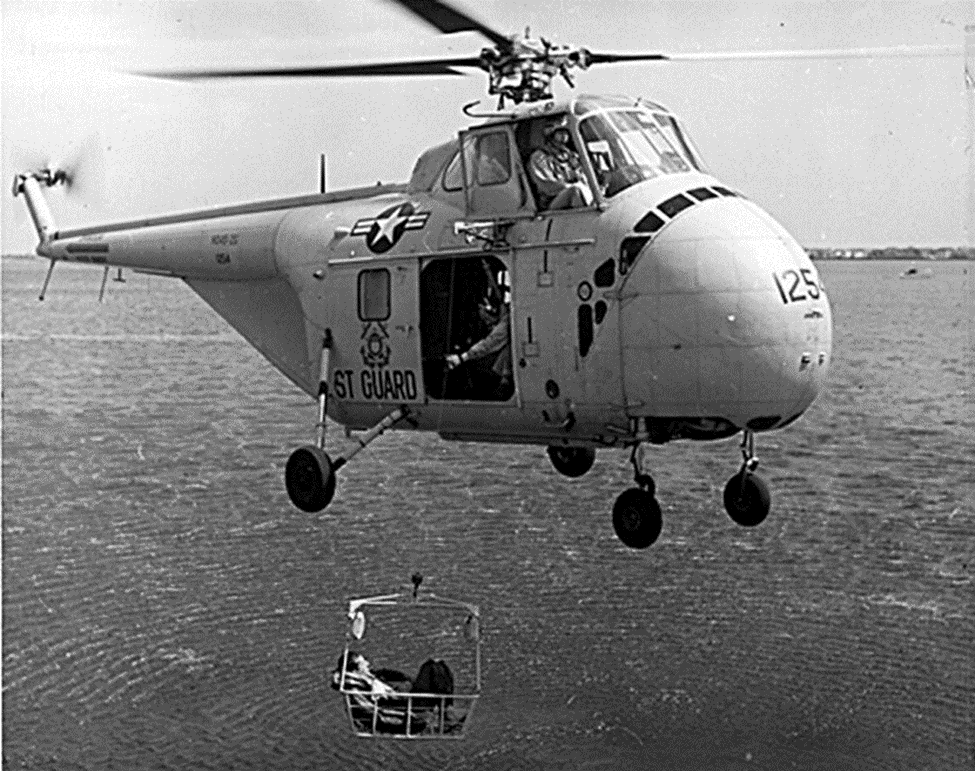
The article “The Helicopter In Rescue” by Captain Woodrow R. Vennel is a great summary of the evolution of Coast Guard helicopter operations through the early 1960s. The practical helicopter was first flown in 1939 and at the time was not a machine capable of doing ‘useful’ rescue work. The Coast Guard made great contributions during the 1940s and 50s toward turning Igor Sikorsky’s fragile machine into a military and rescue workhorse.
In 1961, the Coast Guard was still flying reciprocal engine helicopters including the Sikorsky HO4S-2G / 3G and Sikorsky HUS-1G. Concepts foreign to today’s helicopter pilot such as manipulating the throttle to maintain rotor speed with changes in collective position are discussed. Today’s turbine engine helicopters use governors or other electro-mechanical control systems to maintain rotor speed and relieve the pilot of routine responsibility for that task.
Captain Vennel provides a detailed explanation of a mock search and rescue or medical evacuation case describing various tactics, techniques and procedures involved in removing an ambulatory and non-ambulatory victim from a naval vessel. He also articulates the aircrew challenges associated with this type of evolution and the aircrew thought processes for overcoming these challenges to ensure a successful mission.
Finally, Captain Vennel describes the “Tug Bird” concept that was first tested in the late-1950s to determine the practicability of towing disabled vessels. This procedure was utilized throughout the late-1950s and early-1960s, but disappeared a few years after the arrival of the HH-52A. Interestingly. the U.S. Navy. adopted the “Tug Bird” procedures developed by the Coast Guard for their program of towing paravanes with helicopters to remove mines.
NOTE: Captain Vennel was recognized between 1955 and 1957 with a Commandant’s Citation for “a hazardous helicopter pickup at sea” during his tour at Air Station Salem, MA. The Coast Guard Aviation Association Historians are looking for more information on this case – if you can contribute, please contact us at: [email protected]

